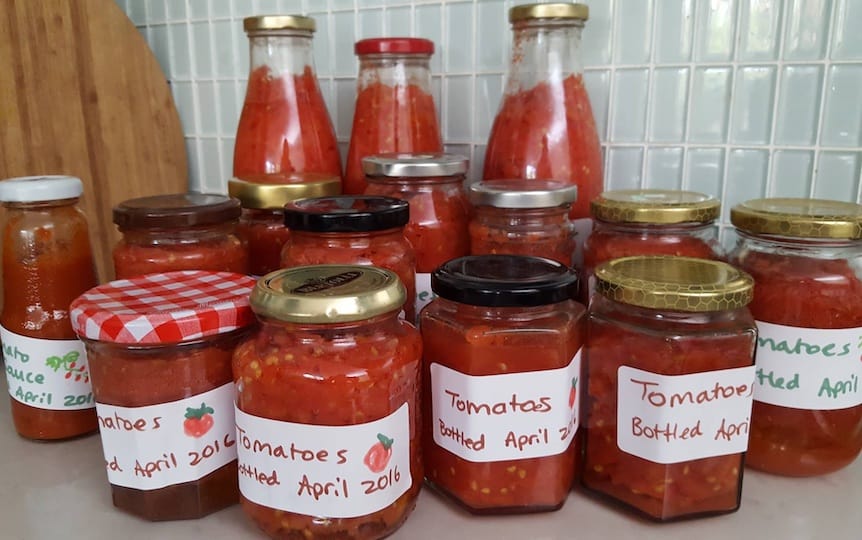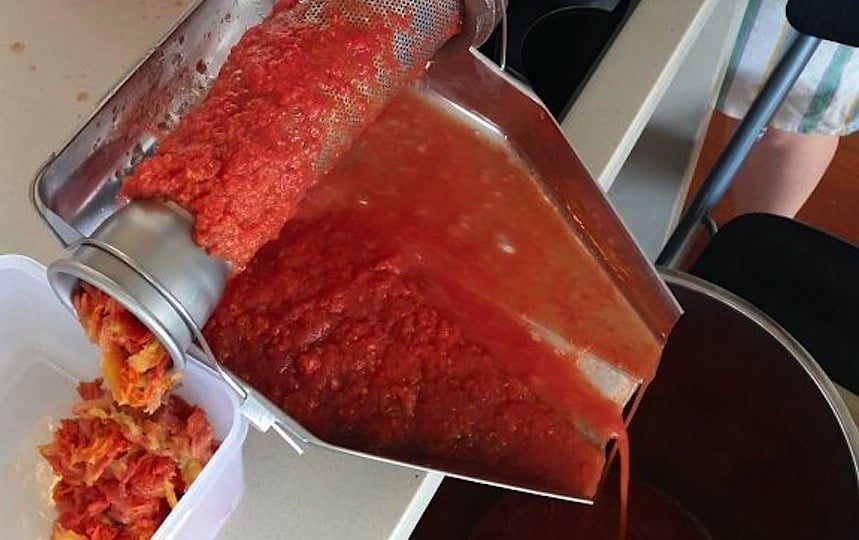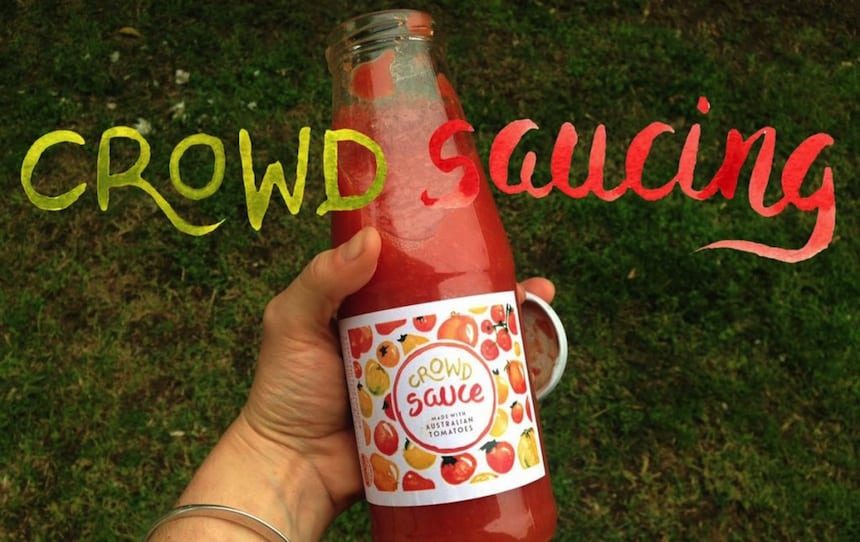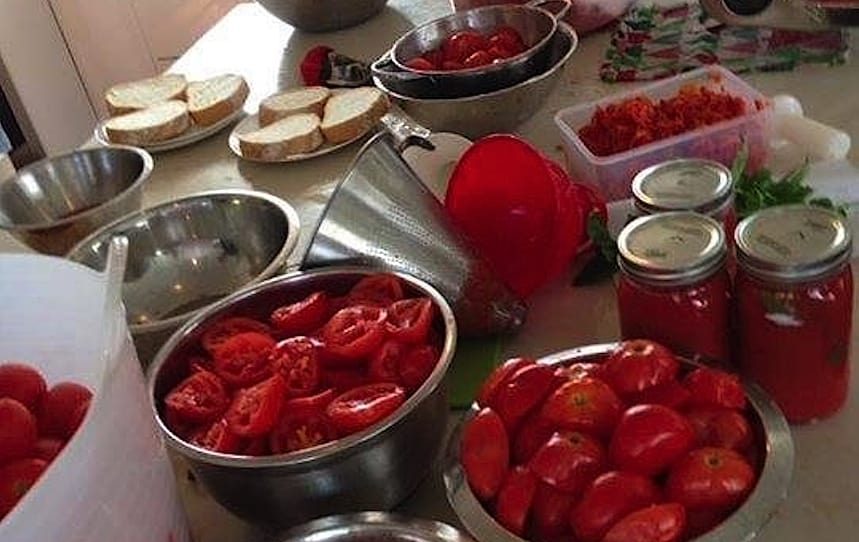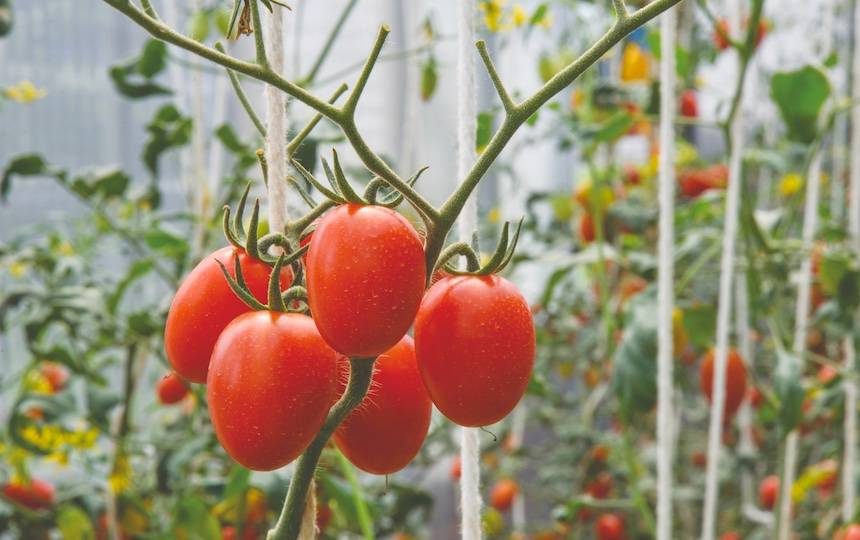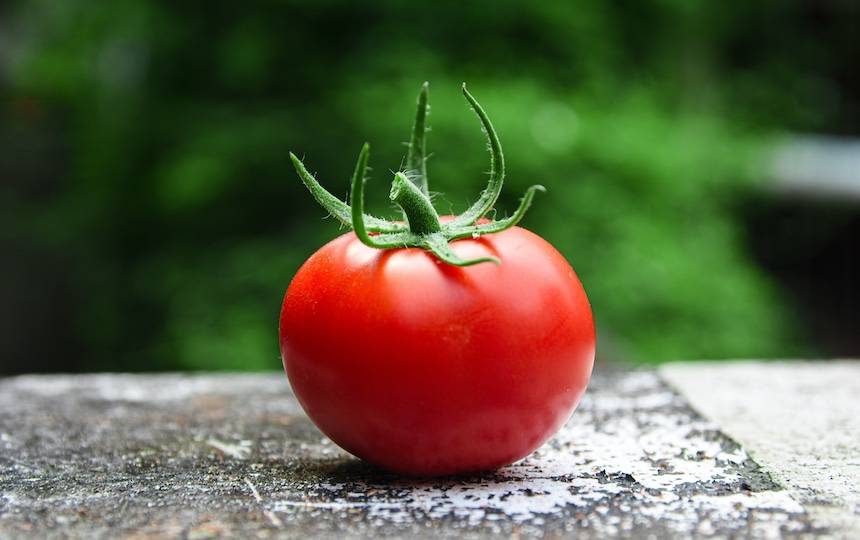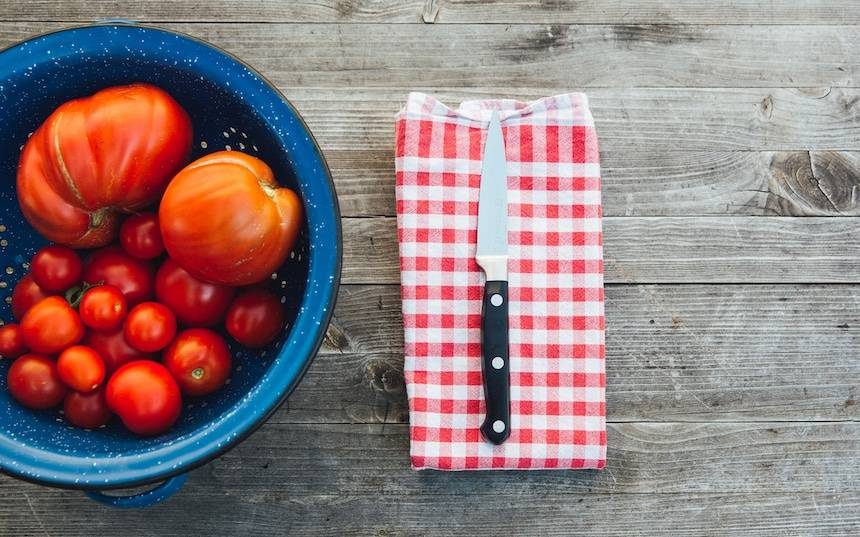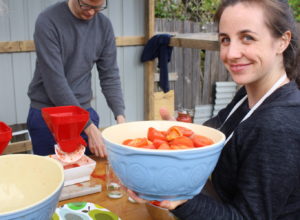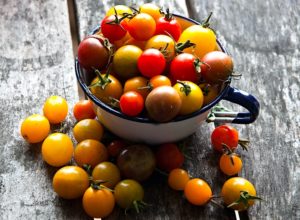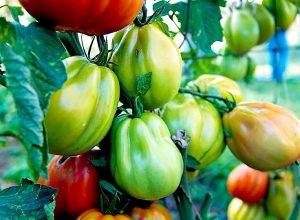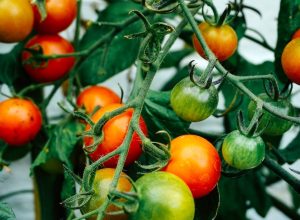Looking to preserve fresh tomatoes? Here’s our easy tomato passata recipe – using either a passata machine or a simple, low-tech, DIY version for those without a passata press.
It’s tomato season! Backyard tomato gluts are ubiquitous with this time of year.
The logical progression of glut is preserve – where we capture and store the energy of those tomatoes so we can enjoy them long after hot days and solanaceae season is but a distant memory.
Easy Tomato Passata Recipe
Passata is so simple. It’s a wonderful base for so many delicious pasta, rice dishes and baked eggs.
Ingredients:
- Tomatoes
- Knife and chopping board
- Large saucepan of vacola
- Tea towels
- Colander of pillow case
- Buckets
- Ladle
- Large funnel
- Mouli, manual passata machine or tomato press.
- Any clean, washed recycled jars or bottles with well-sealing lids. Old passata bottles and pasta sauce jars are great.
- Basil (optional)
Method:
Core tomatoes and remove any blemishes. (Optional: squeeze out the seeds and a little juice by hand – this will make a thicker passata.)
Chop tomatoes roughly. Place the tomatoes in a saucepan and slowly bring to a simmer, being careful not to burn them. Allow to simmer until skins are splitting, about 2 minutes of simmering.
Allow the tomatoes to cool and drain in a colander of pillow case. Discard the water shed from the tomatoes, or use in soups, stock… or Bloody Mary’s!
Process the tomatoes though your passata machine. Re-process the skins once or twice to get the most out the tomatoes. Catch the fresh passata in a bucket.
Place a sprig of basil in the bottom of each jar (optional).
Ladle the passata into jars until there about 200mm between the passata and the lid. Put the lids on firmly but not tightly.
Water bathing the passata
Place jars in a large saucepan or vacola. Fill the saucepan with cold water up to an 200mm below the lids of the jars.
Bring this water-bath to a rolling boil slowly (about 45 minutes to an hour). Turn down to a steady boil for one hour, then turn off and allow to cool completely.
When cool, take out the jars and check if the lids have sealed (they should be slightly concave).
Get fortnightly ideas and inspiration to your inboxFirst Name*Email*Subscribe
Preserving diced tomatoes without fancy equipment
If you don’t have a passata machine, you can still easily preserve your tomatoes in jars.Core the tomatoes, remove blemishes.
Quarter the tomatoes.
Pack the tomato quarters into a jar layer by layer. After one layer, use the handle of a wooden spoon to slightly mash and squash the tomatoes, forcing out some of the juice, and eliminating air bubbles.
Do this until the jar is full and air bubble free, with 200mm of headspace between the tomatoes and the lid of the jar.
Preserve using the water-bath method above.
Want more tomato content?!
We’ve got loads of great content all about big red, juicy tomatoes!
In Issue #10 of Pip Magazine, we bring you a complete guide to tomato preservation, including:
- What preserving equipment you will need.
- What’s involved in the drying and bottling process.
- Different passata recipes including classic, rogue, herbed and tomato smash passata recipes.
- Plus, how to make tomato paste, thick sauce, relishes, pickles and ferments.
You can access this article online here as part of our digital subscription offering.
In Issue #12 of Pip Magazine, Milkwood’s Kirsten Bradley provides an in-depth guide to choosing which tomatoes are the best for your needs, including information on:
- The difference between heritage and hybrid.
- The difference between determinate versus indeterminate tomatoes.
- How to choose the best tomatoes for your situation when it comes to the space you’re working with, how much heat and light your growing area needs, and whether you should opt for bush tomatoes or climbing.
- Plus, we also provide an in-depth table which outlines each of the names, types and groupings of key tomato varieties, what they look like, and what they are/are not good for.
You can access this article online here as part of our digital subscription offering.
In Issue #27 of Pip Magazine, we explore the histryof ‘tomato day’, ‘sauce day’ or ‘passata day’ – whatever you’d like to call it – and how it’s a day for reconnecting with all generations for the annual passata-making tradition.
You can access this article online here as part of our digital subscription offering.
And don’t forget we have loads of tomato-related articles online, including these:
- What Kind of Tomatoes Should I Grow?
- How To Trellis Tomatoes
- How To Save Tomato Seeds
- How To Make Tomato Passata: Video
- Easy Green Tomato Chutney Recipe
- Spice-It-Up Summer Tomato Salsa

